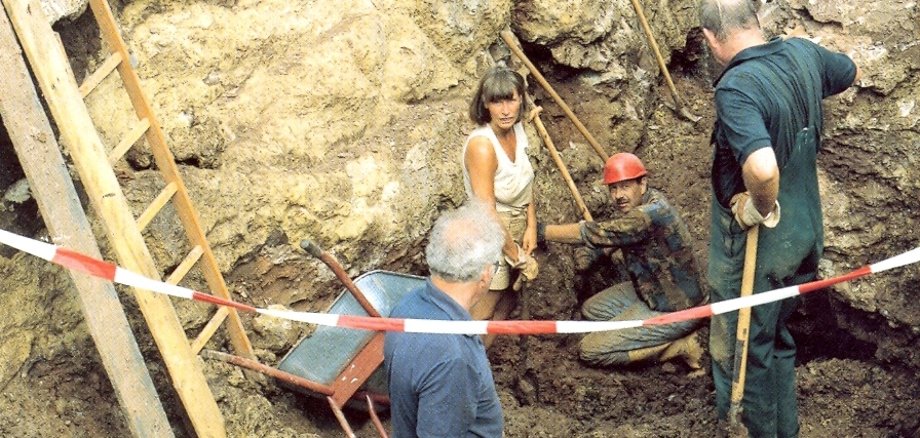New fossil from the Korbach Fissure named
Discovered in the 1990s, now studied and described for the first time by an international team of experts and finally named after the discoverer of the Korbach Fissure - the GrenzWelten National Geopark can boast a new fossil genus and species. Although only one cervical vertebra of Manistropheus kulicki has been found so far, it is so well preserved that the experts were able to recognise a previously unknown species. By naming it after Dr Jens Kulick, without whose discovery of the fossil site on the outskirts of Korbach there would have been no Geopark, they have created a scientific monument.
The research team from the Museum für Naturkunde Berlin, the Smithsonian, Washington D.C./ USA and the Argentinian Museum of Natural Sciences, Buenos Aires, describes the Korbach Fissure not only as a unique fossil deposit, but even "as a key site for better understanding life on land in the tropical regions of the prehistoric continent of Pangaea ... better understood." The discovery also emphasises how important it is to continue researching known fossil sites - especially those that provide insights into ecosystems threatened with extinction. A topic that is also highly relevant today.
The newly named "lunar vertebrate" joins only five known fossil species of Permian archosauromorphs from this period worldwide. It thus closes a gap in the fossil record at the boundary of the Permian and Triassic periods. According to the team of experts, an examination of the relationships suggests that Manistropheus kulicki is one of the earliest representatives of this important reptile lineage - a remarkable discovery that further enhances the Korbach Fissure and the GrenzWelten National Geopark.
The scientific results are published in the "Journal of Systematic Palaeontology". Anyone interested in the scientific description can find a summary at https://www.museumfuernaturkunde.berlin/de/museum/medien/presse/neues-fossil-zeigt-verborgene-vielfalt-urzeitlicher-reptilien-vor-groesstem.
Caption: A previously unknown species was named after him: Discoverer Dr Jens Kulick (foreground, with his back to the camera) at the Korbacher Spalte fossil site, where the "moon vortex animal" was found. Photo: Hessian State Office for the Environment, Nature Conservation and Geology Wiesbaden
Keywords:
Environment and Climate Protection Department Geopark GrenzWelten
